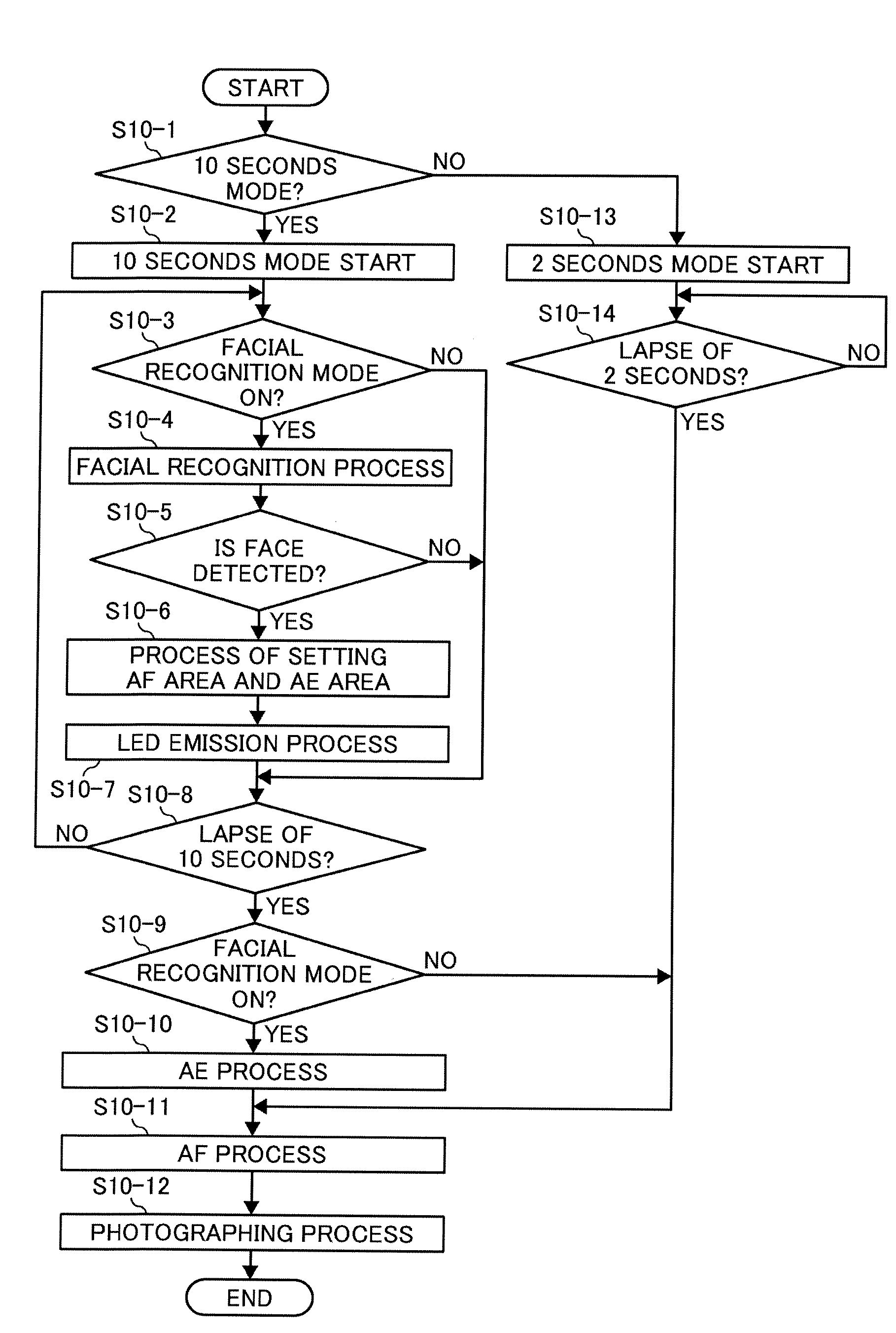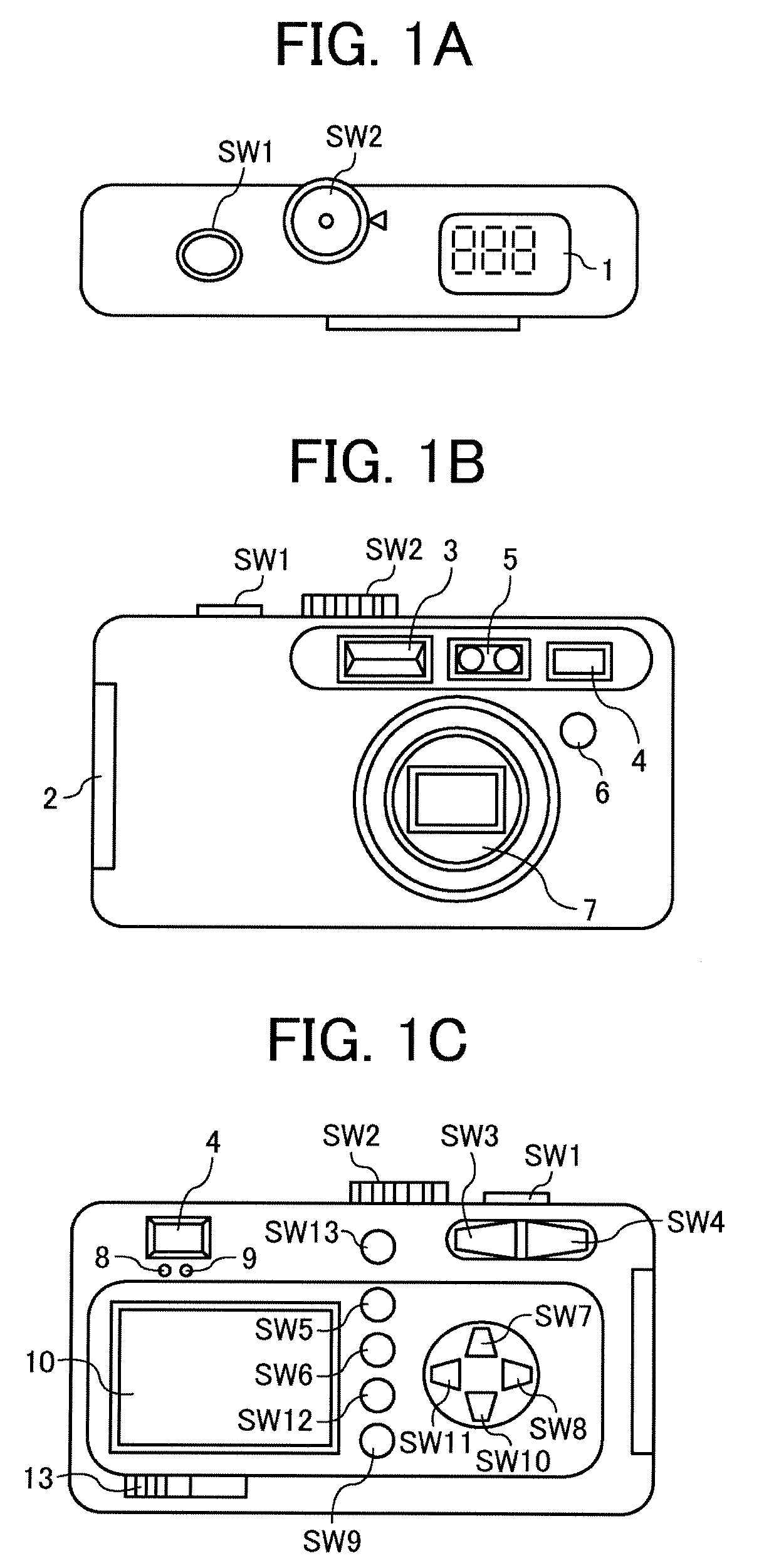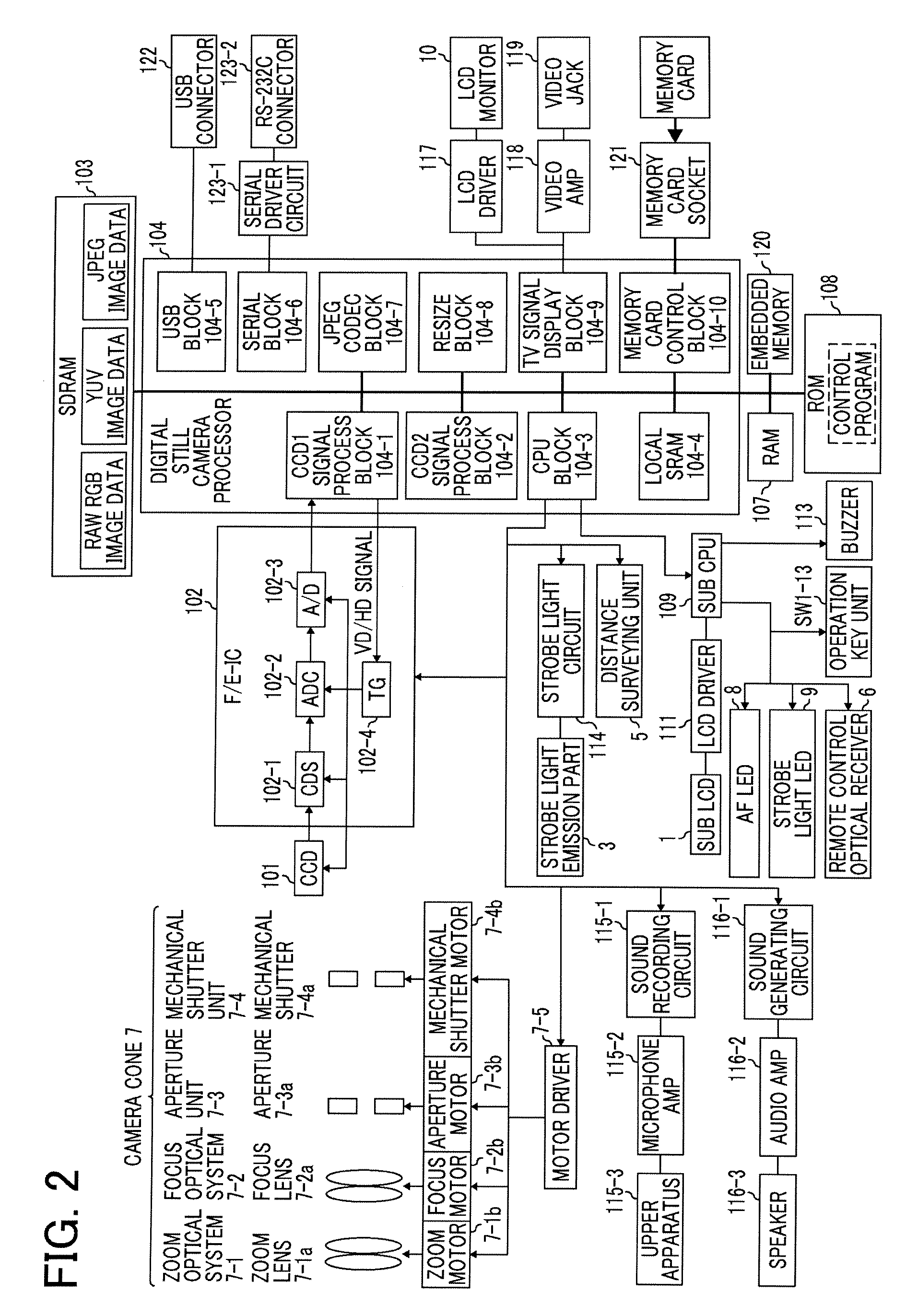Imaging device and method which performs face recognition during a timer delay
- Summary
- Abstract
- Description
- Claims
- Application Information
AI Technical Summary
Benefits of technology
Problems solved by technology
Method used
Image
Examples
first embodiment
[0055]Next an operation of the digital camera in the first embodiment is described below. The facial recognition process in the finder mode is described below with respect to FIG. 8.
[0056]Since the finder mode is updated at 1 / 30 second intervals, the facial recognition process is operated so that the facial recognition process is synchronized with the finder mode. In the first step S8-1, the digital camera starts a flow for the facial recognition process. In the next step S8-2, the digital camera confirms whether the facial recognition mode is set or not. In the case that the facial recognition mode is set, flow proceeds to step S8-3, in which the digital camera performs a facial recognition process. In the next step S8-4, the digital camera sets an AF area based on a result of facial recognition process corresponding to a detected facial area shown in FIG. 5. When the digital camera does not complete the facial recognition process, the digital camera sets a normal AF area as the AF...
second embodiment
[0072]As described above, the digital camera does not need to estimate a focus position at the time of photographing, operate a pre-focus process (a distance surveying process which occurs by pressing release button halfway on commonly-used cameras), or start the self-timer mode when pressing the release halfway. In sum, the digital camera avoids troublesome operations and the digital camera starts the self-timer mode facing a suitable direction. The digital camera obtains a photographing result, which focuses a subject face and has a suitable exposure even when the photographer is a subject person and the digital camera reoperates the photographing process quickly because the digital camera detects a face area of a subject person, and operates the AF process and AE process based on the face area for 10 seconds (2 seconds) after the self-timer mode starts. The present invention including this and other embodiments allows a good and quick result using facial detection when the photo...
third embodiment
[0077]As described above, the digital camera does not need to estimate a focus position at the time of photographing, operate a pre-focus process (a distance surveying process which occurs by pressing release button halfway on commonly-used cameras), or start the self-timer mode when pressing the release halfway. In sum, the digital camera avoids troublesome operations and the digital camera starts the self-timer mode facing a suitable direction. The digital camera obtains a photographing result, which focuses a subject face and has a suitable exposure even when the photographer is a subject person and the digital camera reoperates the photographing process quickly because the digital camera detects a face area of a subject person, and operates the AF process and AE process based on the face area for 10 seconds (2 seconds) after the self-timer mode starts. The present invention including this and other embodiments allows a good and quick result using facial detection when the photo...
PUM
 Login to View More
Login to View More Abstract
Description
Claims
Application Information
 Login to View More
Login to View More - R&D
- Intellectual Property
- Life Sciences
- Materials
- Tech Scout
- Unparalleled Data Quality
- Higher Quality Content
- 60% Fewer Hallucinations
Browse by: Latest US Patents, China's latest patents, Technical Efficacy Thesaurus, Application Domain, Technology Topic, Popular Technical Reports.
© 2025 PatSnap. All rights reserved.Legal|Privacy policy|Modern Slavery Act Transparency Statement|Sitemap|About US| Contact US: help@patsnap.com



